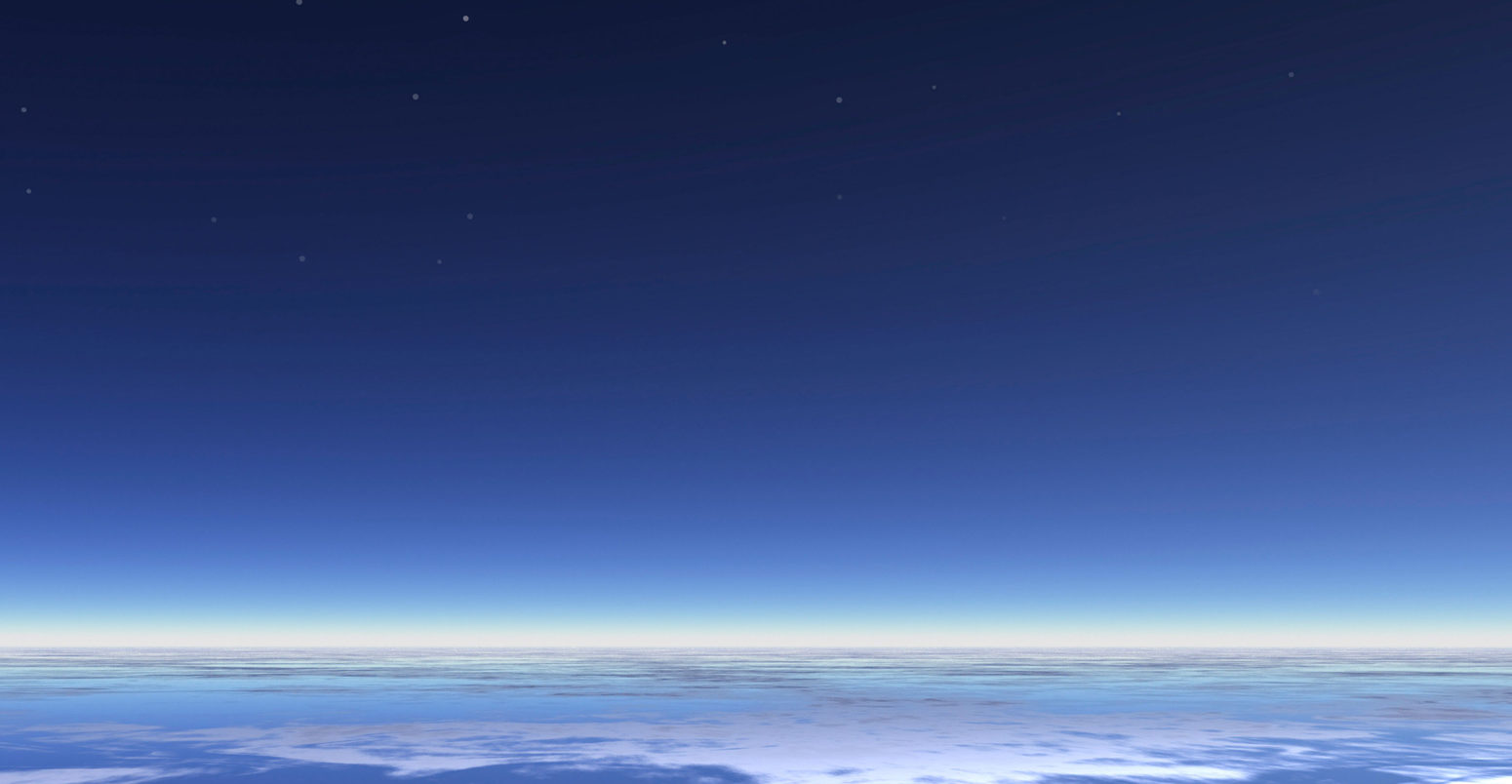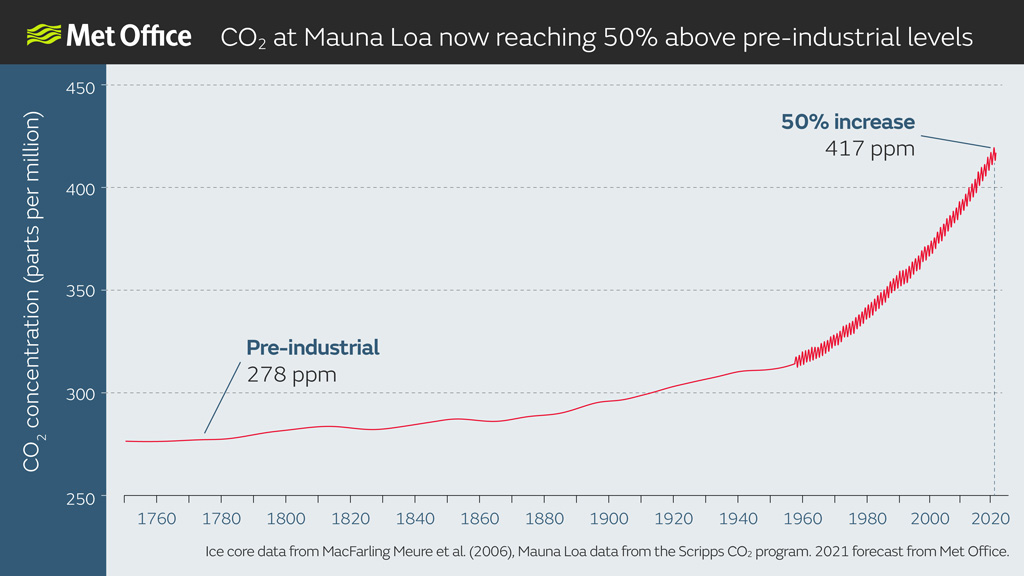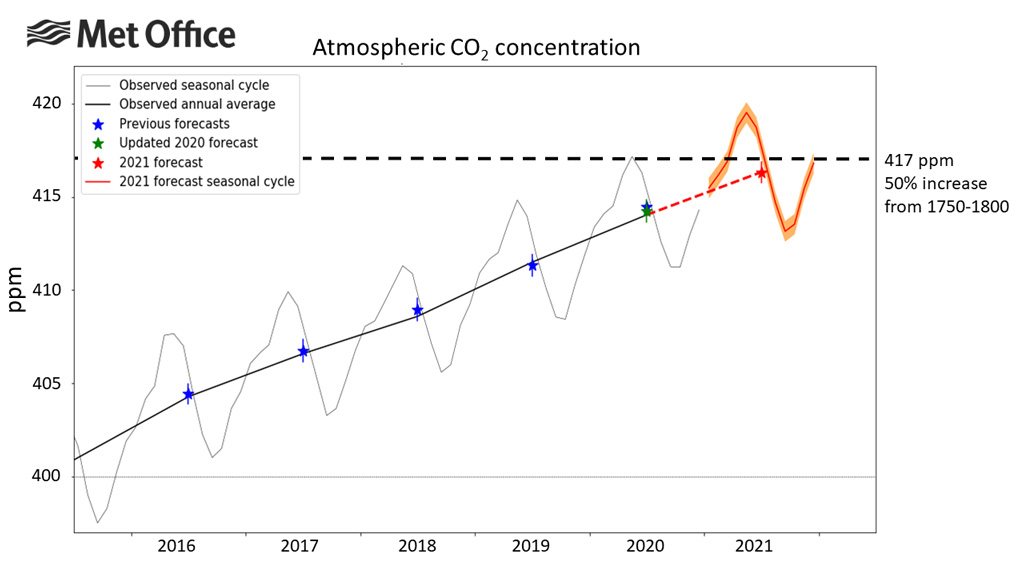
Met Office: Atmospheric CO2 now hitting 50% higher than pre-industrial levels

Prof Richard Betts MBE
03.16.21
Prof Richard Betts MBE
16.03.2021 | 4:09pmCarbon dioxide (CO2) in the atmosphere is now reaching levels 50% higher than when humanity began large-scale burning of fossil fuels during the industrial revolution.
Recent measurements from the Mauna Loa observatory in Hawaii show that for several days in February and March 2021, atmospheric CO2 levels exceeded 417 parts per million (ppm). Pre-industrial levels were about 278ppm.
In the coming weeks, CO2 levels will continue to increase further. As a result, 2021 is expected to be the first year on record that sees CO2 levels of more than 50% above pre-industrial levels for longer than a few days.
Monitoring the CO2 build-up
Records derived from ice core measurements show that the average global CO2 concentration in the atmosphere for 1750 to 1800 was around 278ppm. This is the value that the Intergovernmental Panel on Climate Change (IPCC) used as the pre-industrial baseline for CO2 in its fifth assessment report (pdf), published in 2013-14.
Atmospheric CO2 has been rising ever since – driving ongoing warming of the global climate. Now, in March 2021, levels have reached around 417ppm – a 50% increase over the 1750-1800 average.
The plot below shows atmospheric CO2 levels from 1700 to 2021. This is based on ice core data before 1958, then the instrumental record at Mauna Loa from the Scripps CO2 program and, finally, the 2021 CO2 forecast from the Met Office. (The apparent change in 1958 is because ice core records do not capture the seasonal cycle seen in instrumental records.)

The human-driven CO2 rise is, therefore, halfway towards “doubled-CO2” – the long-standing benchmark for quantifying long-term future global warming in terms of Equilibrium Climate Sensitivity (ECS).
Systematic long-term measurements of atmospheric CO2 were started in 1958 by Charles David Keeling at the Mauna Loa Observatory in Hawaii. This CO2 record is the data behind the iconic “Keeling Curve”.
Since then, additional measurement sites around the world have enabled the global average CO2 concentration to be estimated. In combination with the ice core data, these records show several important things.
First, the annual average CO2 concentration is increasing year-on-year. This is mainly due to the burning of fossil fuels, with further contributions from deforestation.
Second, as human-driven emissions have increased, the rise in CO2 has accelerated. It took over 200 years to reach a 25% increase by 1986. By 2011 – 25 years later – the increase reached 40%. Now after one more decade it is reaching 50%.
Third, each year there is a clear seasonal swing in atmospheric CO2 levels, with the Mauna Loa record showing a peak around May and a low point around September. This is due to vegetation taking up CO2 in the growing season and releasing it in the autumn and winter.
A 50% increase in CO2
In May last year, scientists recorded CO2 concentrations of 417ppm at Mauna Loa for a few days. In 2021, 417ppm has so far been measured for several days in February and early March, but the usual springtime upward trend will soon take concentrations above this level for the next three to four months.
Therefore, 2021 is expected to be the first year on record with CO2 levels more than 50% above pre-industrial levels for longer than a few days.
The Met Office predicts that the monthly average CO2 at Mauna Loa will peak at 419.5ppm (±0.6) in May, after which it is expected to temporarily drop back down below 417ppm from around late July onwards. It is then predicted to return to around 417ppm at the end of the year.
The plot below shows the annual cycle of atmospheric CO2 level. Observed CO2 levels are shown in black, and the 2021 forecast is shown in red.

Overall, the annual average CO2 concentration for 2021 is predicted to be 416.3ppm (±0.6). With the annual rise being about 2.5ppm – even last year when emissions fell sharply due to economic impacts of the Covid-19 pandemic – it is clear that 2022 will be the first year with the annual average CO2 at 50% above pre-industrial levels.
-
Met Office: Atmospheric CO2 now hitting 50% higher than pre-industrial levels

